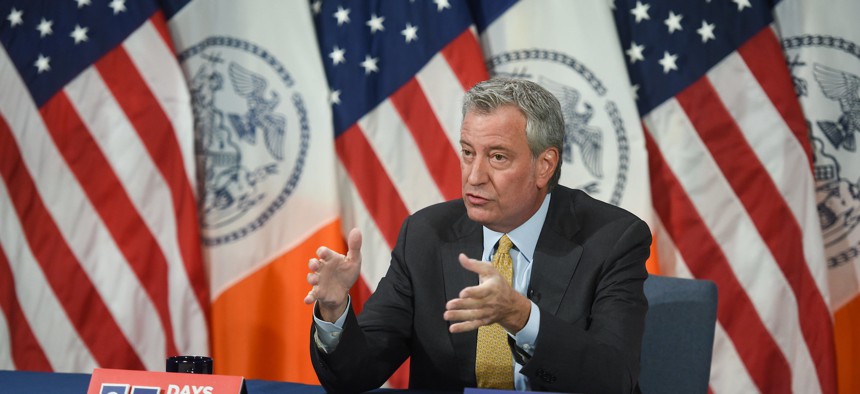Organized labor has taken on an outsized importance in recent weeks as New York City continues efforts to jump-start its recovery from the coronavirus. Unions have already delayed the reopening of schools and joined the mayor in his efforts to get $5 billion in new bonding authority approved by state lawmakers to help the city bridge a $9 billion budget shortfall this year.
A new round of five-day furloughs for 9,000 managerial and nonunionized employees will get the city $21 million closer to plugging its budget hole, but the cooperation of unionized labor will be crucial to secure more significant reductions in the budget. “We have to find every conceivable action now to keep finding savings,” said the mayor, who announced last week another $1 million in savings by having himself and hundreds of City Hall staffers go on five-day unpaid furloughs in the coming months.
The mayor has previously claimed that some of the unions representing hundreds of thousands of city employees are amenable to hiring freezes and pay reductions, but a deal does not appear to be imminent. “I don’t know who he’s talking to,” Gregory Floyd, the leader of Teamsters Local 237, which represents 24,000 city workers, told the Daily News in late August. “I don’t plan on freezing salaries or reducing salaries.”
De Blasio’s previous suggestions that as many as 22,000 city employees could get laid off in the upcoming weeks has also rubbed some labor leaders wrong at a time when he is courting their support for legislation that would give the state the new bonding authority. “That is the cleanest, fastest way to avert the layoffs,” de Blasio said last month, but even if the legislation passes despite ongoing opposition from state lawmakers and Gov. Andrew Cuomo, the city would still have to find $4 billion or so to plug the rest of the hole.
Billions in new federal aid for state and local governments appears to be off the table this year, as the governor holds out for a Democratic victory in the presidential election, which would make aid more likely in early 2021. Some state lawmakers and budget experts from across the political spectrum say the state should act sooner than that in order to give local governments some clarity about how much state aid they can expect for the remainder of the fiscal year.
State-level efforts to raise taxes on the wealthy could help the city, as could legislation before the City Council that would create a new incentive program to decrease the municipal labor force through early retirements. But negotiating lower costs with the unions representing city employees as varied as office staff and sanitation workers will likely prove key in the end. At a time when organized labor appears to be getting stronger and stronger in the city and more aligned with the political left, the big question will be what unions want in return.
NEXT STORY: Schumer’s options in the battle to replace RBG


